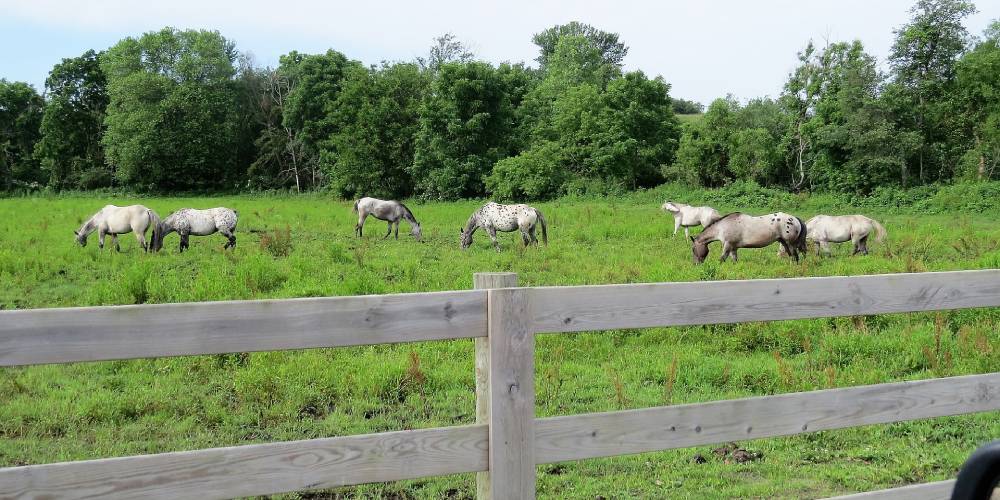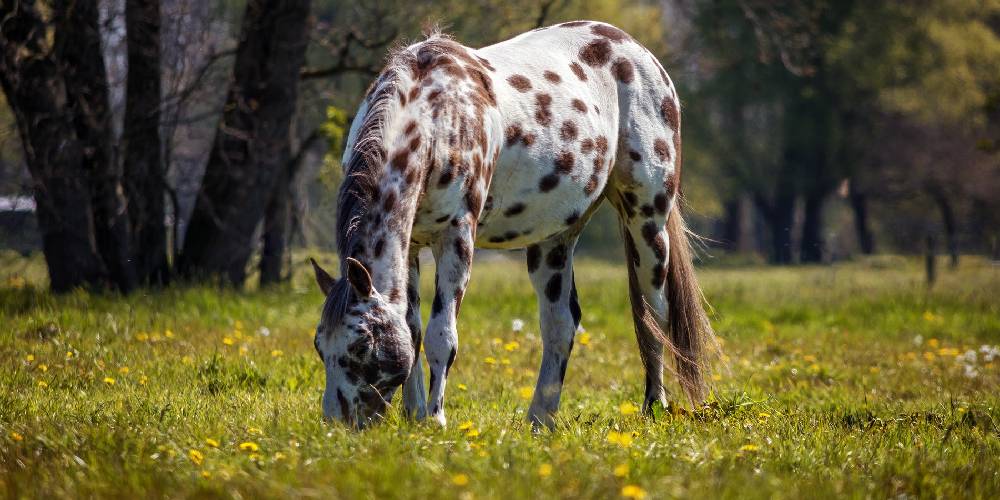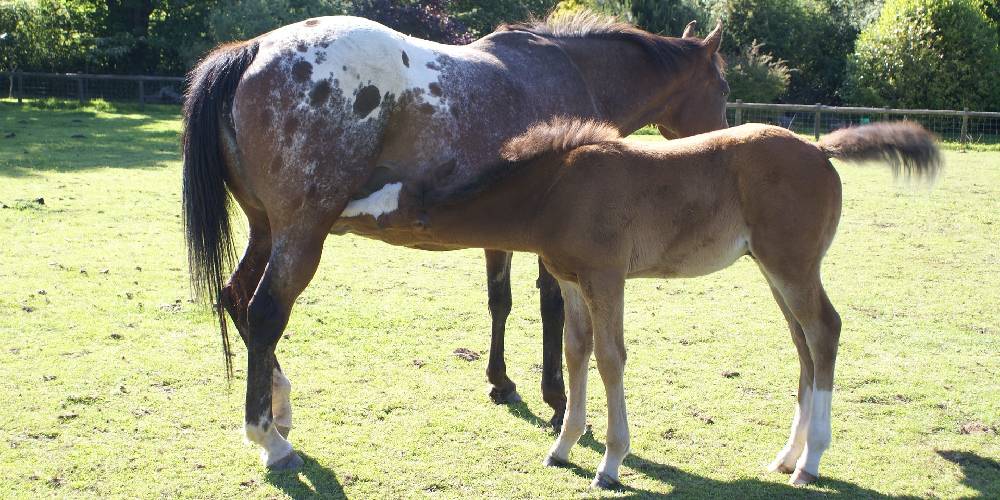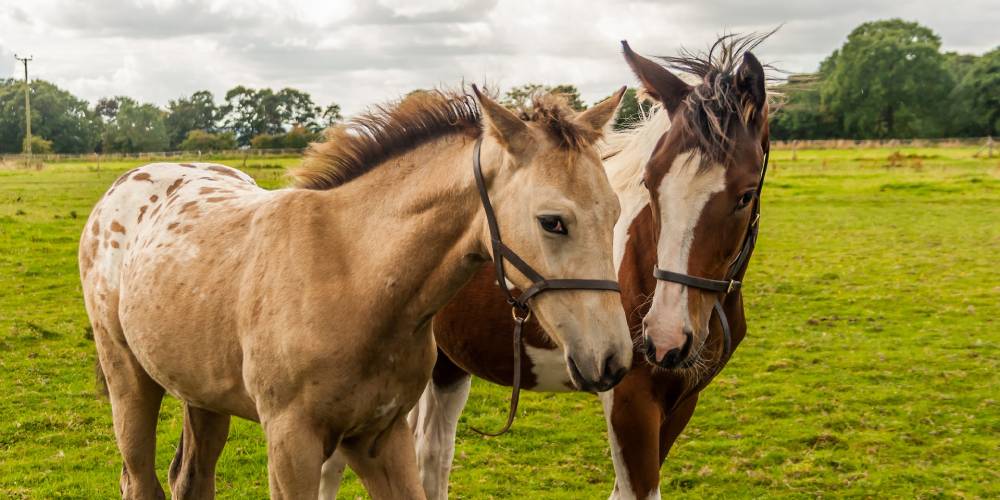There are so many different breeds of horses in the world that come with spotted coats. There are the Appaloosas developed by the Nez Perce native Americans, and then there is the European Knabstrupper breed. But there is in fact one pony breed known as the Pony of the Americas that is known not only for its number of uses, but also for its beautiful spotted coat.
What Is The Pony of the Americas?
The Pony of the Americas is a breed of pony whose origins fall in the United States of America. These ponies are a relatively new breed as they were only just created in the 1950s. Like the American Appaloosa breed, these ponies carry that beautiful spotted coat and must carry a spotted coat pattern to be considered a purebred Pony of the Americas. These ponies are used for a number of different things and are most popularly used as a children’s riding pony because of their small size.
Basic Breed Information
| Height | Between 11.2 and 14.2 hands high |
| Weight | Between 800 and 1,000 pounds (365 to 455 Kilograms) |
| Acceptable Colors/Patterns | Must have a spotted coat |
| Country of Origin | United States of America |
| Type | Warmblooded Pony |
How Big Is This Pony Breed?

The Pony of the Americas is not a very big or heavy breed of pony. On average, these ponies stand in between 11.2 and 14.2 hands high. This makes them average to tall in height, but because of their light frame inherited from their Arabian ancestors, these ponies aren’t large at all.
Usually, these ponies will weigh between 800 and 1,000 pounds (or 365 to 455 Kilograms). This pony breed, because of their taller height for being ponies, weigh quite a bit more than their Shetland ancestors do.
What Colors & Coat Patterns Can The Pony of the Americas Have?
In order to even be registered as a pure Pony of the Americas, these ponies must carry one of the spotted coat patterns typically found in the Appaloosa breed. These patterns include:
Blanket
A blanket marking is a white marking that covers the hindquarters, croup, and loins. If this marking is purely white, it can be considered a snow cap marking.
Spots
If a horse has random spotting in no apparent pattern, it would just be called spots. This would mean that there are a random arrangement of different colored spots all over the body.
Blanket With Spots
A blanket marking with spots would be a white marking on the hindquarters and an arrangement of white spotting over a base coat color.
Roan Blanket
A roan blanket is basically just a roan base coat with a white blanket marking on the horse’s hindquarters.
Roan Blanket With Spots
This marking or pattern is basically a blanket with spots that has a roan coat color as the base color. This would mean that there is a roan horse that has a white blanket pattern in it’s hindquarters and random spotting everyhwere else in its coat.
Snowflake
A snowflake coat pattern consists of a dark base coat with white spots. It looks as if it is snowing on the horse.
Leopard
In a leopard coat pattern, the base color of the coat is white and the coat is speckled with dark spots. This is the most common coat pattern seen in this breed.
Frost
A frost coat pattern is basically a dark coat with small white specks. This is kind of like the opposite of a flea-bitten horse.
The History of the Breed
This pony breed has a relatively short history because it was only just created a breed in the 1950s.
The original cross between two horses to create this breed was done by an Appaloosa mare and a Shetland pony stallion. Together, this cross created a stallion by the name of Black Hand 1 who became the founding sire of this breed.
All the breeds that have been added into the Pony of the Americas bloodline include:
- Shetland
- Appaloosa
- Quarter Horse
- Arabian
- Welsh Pony
All of the best traits from these breeds are seen in the Pony of the Americas and it is these traits that make these ponies so popular.
Today, a purebred Pony of the Americas must carry one of the Appaloosa coat patterns in order to be considered a true purebred.
How To Identify the Breed

There are a few ways to identify this breed of pony. The traits to look out for include:
Height
These ponies are small and not many other ponies carry the same traits as these ponies do. Because of this, you can say that a spotted pony that matches the height of this breed is likely a Pony of the Americas.
Conformation
Thanks to the Quarter Horse blood that was added into this breed, the conformation of the Pony of the Americas greatly resembles that of the Quarter Horse, just on a smaller spotted scale.
Head
Thanks to that Arabian blood, the Pony of the Americas inherited a dished face which gives them an elegant and graceful appearance.
Coat Pattern
These ponies are often identified by their coat patterns. The Pony of the Americas, like I said before, must carry one of the spotted coat patterns found in the Appaloosa breed. This is one of the best ways to identify this pony breed as if the pony you are looking at fits all the other characteristics and has a spotted coat, it is likely one of these ponies.
Tail
Again, thanks to the Arabian breed, these ponies have a high-set tail. Sometimes, they may even carry their tails high like an Arabian might!
What Are These Ponies Used For?
The most common use for these ponies is to be ridden by children, but there are so many other things that these ponies are capable of. Some of the things that these ponies can do include:
Showjumping
These ponies, though they may not make it to the extremely high levels, have some jumping ability in them. This means that at the smaller youth shows, the Pony of the Americas is able to compete and jump small courses.
Dressage
Because of the elegant appearance and great temperament of these ponies, they often do really well when it comes to dressage.
Cross Country
Because these ponies are descended from so many different horse breeds known for their great stamina and speed, these ponies do great at lower level cross country competitions.
Eventing
Because these ponies are able to jump, perform dressage, and have an incredible stamina, they do great at eventing. Not only are their spotted coats extremely flashy, but their success in this discipline will turn heads. These ponies are an idea mount for the young eventer.
Barrel Racing
Like Quarter Horses and Appaloosas alike, the Pony of the Americas does really well in a number of rodeo sports, including barrel racing. This breed is known to have competed at the youth and kid level shows in this discipline and has done great.
Pole Bending
Like in barrel racing, this pony breed is known to do great when it comes to rodeo sports. These ponies are quick and able to make the fast turns necessary for this sport. This is why they are often used for these rodeo events.
General Riding
These ponies do best when just being used for general riding whether it is for English or Western riding. Children of all ages do great when riding these ponies because of how easy they are to get along with and how versatile they are.
What Is The Average Lifespan For One of These Ponies?

These ponies live the average lifespan as that of an average horse. This means that they can live to be between 25 and 30 years old. With the proper care however, these ponies can potentially live into their 30s.
Fun Facts On This Breed
- This pony breed is a really new breed and was created by an Appaloosa Shetland Pony cross
- The shortened name for these ponies is POA (rather than saying Pony of the Americas)
- Despite having Arabian and Appaloosa ancestors, these ponies are really mellow and easy to get along with
- The Pony of the Americas Club is one of the most active youth-oriented pony clubs in the United States

